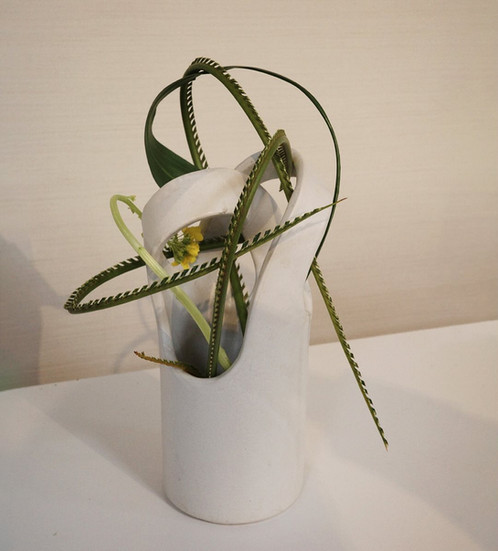What is Ikebana? | The Art, History, and Schools of Japanese Flower Arrangement
- いけばな教室 おおら花
- Oct 11
- 3 min read
Updated: Oct 22
▶︎What You’ll Learn in This Article
1.What is Ikebana?
2.The History of Ikebana
3.The Major Ikebana Schools
4.About the Ryusei School (Ryusei-ha)
5.Learning Ikebana at Oraqua
6.For First-Time StudentsWhat is Ikebana?
A uniquely Japanese art where nature and human sensibility meet
Ikebana is more than just arranging flowers — it is a traditional Japanese art form that harmonizes the beauty of nature with human emotion and spatial awareness.
Every stem, leaf, and branch is chosen and placed with intention. The empty space between them, known as “Ma”, gives life to invisible beauty and balance.
Rather than decoration, Ikebana is an act of quiet dialogue with nature.
As you arrange, you begin to sense your own emotions and state of mind reflected in the flowers before you.
This introspective quality — where expression meets mindfulness — is one of Ikebana’s greatest appeals.
The History of Ikebana
Over 700 years of tradition — a living dialogue between flowers and people

The origins of Ikebana date back to Kuge — the ancient Buddhist ritual of offering flowers to the Buddha.
In the 14th century (Muromachi period), it evolved from a religious offering into an independent artistic practice.
By the Edo period (17th–19th century), formal styles were established, and after the Meiji Restoration (late 19th century), many new schools (ryuha) emerged, connecting Ikebana deeply with everyday Japanese life.
Today, Ikebana continues to evolve — blending with modern art, architecture, and design while maintaining its essence of respect for nature and impermanence.
On December 16, 2024, the Japanese government officially registered Kadō (the Way of Flowers) as an Intangible Cultural Property, recognizing its cultural importance as a traditional art that combines seasonal plants, vessels, and refined techniques passed down for centuries.
Ikebana remains a “culture of form” that embodies Japanese aesthetics — continuously shared and reimagined across generations and beyond Japan’s borders.
The Major Schools of Ikebana
Over time, Ikebana developed into several major schools, each with its own philosophy and aesthetic principles:
Ikenobō (池坊) – the oldest and most formal school, emphasizing classic structure and discipline.
Sogetsu-ryū (草月流) – modern and expressive, encouraging creative freedom and individuality.
Ohara-ryū (小原流) – known for its flowing, natural compositions inspired by landscapes and water.
Each school values different aspects of nature, line, and emotion — together shaping the richness and diversity of Ikebana today.
About the Ryusei School (Ryusei-ha)
Balancing tradition and freedom — the spirit of contemporary Ikebana
Founded in 1886, the Ryusei School (Ryusei-ha) draws from the traditions of the Ikenobō lineage but places equal importance on modern sensibility and form.
Its philosophy:
“Master the form, then transcend it.”
Ryusei-ha students first learn the classical structures, then explore personal expression through freedom of form.
This school values emotion, rhythm, and the sculptural relationship between plant, space, and light — qualities that align with modern art while remaining rooted in tradition.
At Oraqua, we follow this Ryusei approach — teaching both classical Ikebana (Kotenka) and free-style Ikebana (Jiyūka) as two complementary paths toward creative balance.
Learning Ikebana at Oraqua, Tokyo
A place where tradition meets the present
Oraqua offers Ikebana classes in the Nihonbashi area of central Tokyo, located just a 2-minute walk from Bakurocho Station, on the first floor of Studio SOIL — a calm, gallery-like space for creative practice.
Here, people from diverse backgrounds gather — business professionals, designers, parents, and students — to share a quiet time with flowers.
Ikebana at Oraqua is not about strict formality.
It’s about reconnecting with your own rhythm, about pausing between the noise of the day and rediscovering the beauty in stillness.
Whether you are a beginner or continuing your practice, each class offers space to explore at your own pace — guided gently by an experienced instructor certified by the Ryusei School.
For First-Time Students
All tools and materials are prepared for you
If this is your first time, you can start easily — everything is ready for you.
Scissors (Hasami), kenzan (needle pin holder), vases, and fresh seasonal materials are all provided.
Classes are available in English and Japanese.
You can book a trial session online and experience the calm, meditative nature of Ikebana firsthand.




























Comments